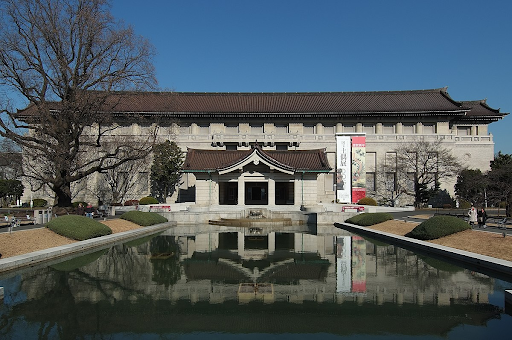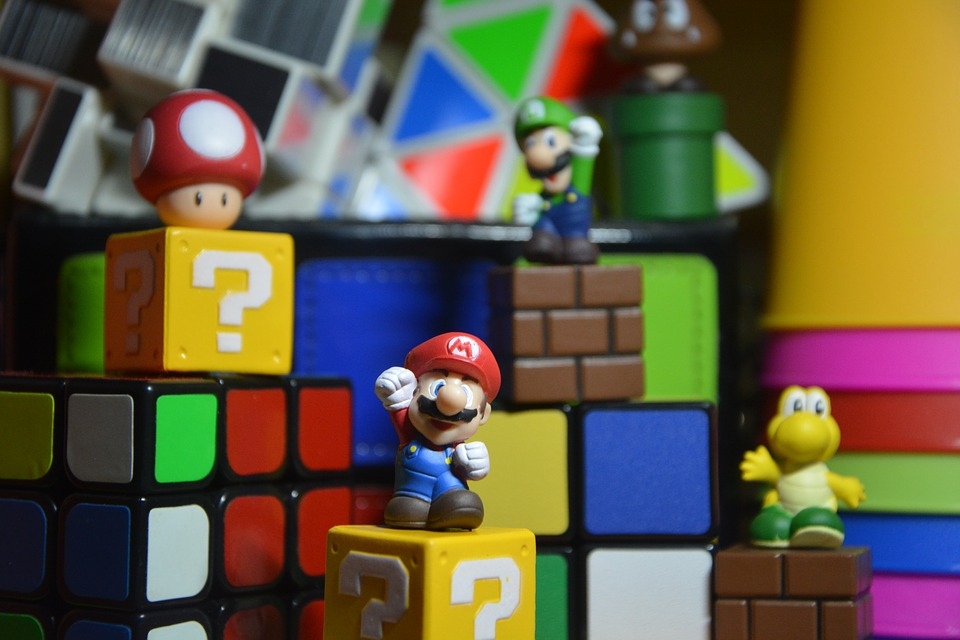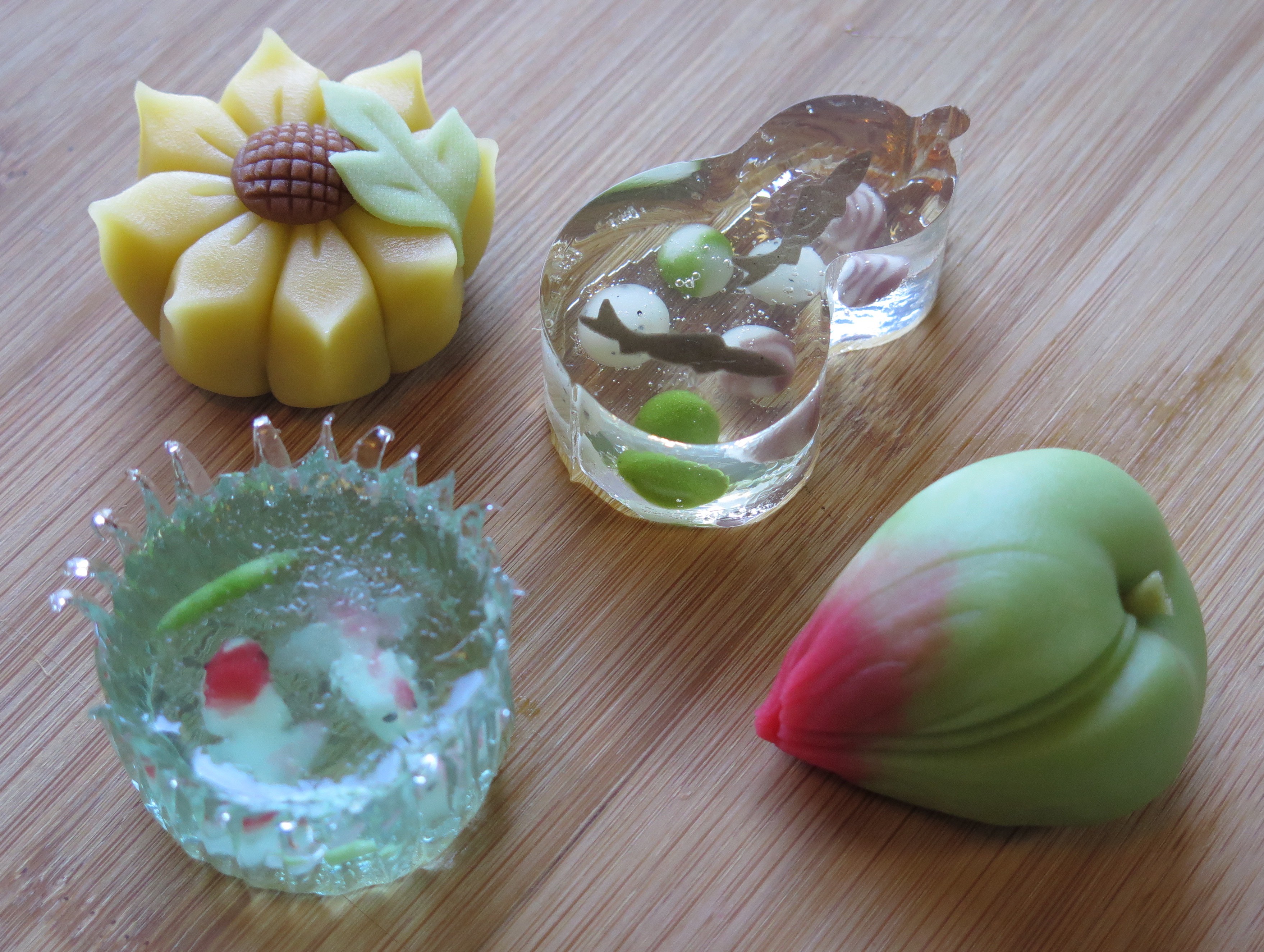Photo by Douglas Perkins and Licensed by Creative Commons
Wagashi is a Japanese confectionary (a food item rich in carbohydrates and sugar) made from bean paste, sticky rice and fruits. What makes wagashi interesting and Kawaii (cute) is that it is available in various cute appearance (kawaii) that resembles leaves, plants and cute animals. You can enjoy a Wagashi by pairing it with tea or coffee. Bring these Wagashi sweets as Omiyage (gifts or souvenirs) to your family, coworkers and friends.
A short history of Wagashi
Wagashi dates back to the Yayoi Era (300 BC - 300 AD) - the beginning of Japanese Neolithic period. The term wagashi 和菓子 came first from the word Kuwashi 果子 - kanji characters that means fruit and child. Soon after the Yayoi Japanese made the way of preparing nuts, flour and fruits - and Wagashi was born.
Two types of Wagashi
-
Namagashi 生菓子 - Raw sweets - Are sweets that contain above 40% water.
-
Higashi 干菓子 - dried sweets - Includes wafers, cookies, biscuits and cakes.
Castella カステラ
Photo by 毒島みるく and Licensed under Creative Commons
Castella (Kasutera) is a sponge cake brought by Portuguese navigators who visited Japan in the 16th century. They ended up in Nagasaki was the only port available for foreign commerce. Since the cake can last for a long time, it became useful for the seamen. Over hundreds of years, the cake suited to the taste of the Japanese and became the speciality of Nagasaki.
This sponge cake is soft and tastes depending on the flavouring used as Castella could be flavoured with fruits, milk, matcha and honey. It is basically made with eggs, honey, milk, bread flour and sugar. You can enjoy this treat with coffee and green tea.
Chimaki 粽
Photo by iskws and Licensed under Creative Commons
Similar to Chinese Zongzi, Chimaki is made from steamed sticky rice, wrapped in bamboo leaves and secured with strings. It’s formed into triangles, rectangles or conical shapes. It’s available in two varieties: The sweet Chimaki (made from glutinous rice and yokan and the savoury Chimaki (consisting of vegetables and meat).
You can see Chimaki displayed as amulets in houses in Kyoto. The dessert is bundled to appear as a small broom. The displaying of Chimaki is associated with the Gion festival that is held in the Yasaka shrine. You can buy Chimaki at the shrine during the Gion Festival (July 1 to July 31) yearly.
Dango 団子
Resembling a kebab, Dango is a skewered rice dumpling served with a bowl. It’s available in a variety of colours and flavours. Dango is also categorized as a type of Mochi. Here are the types of Dango:
|
Types |
Description |
|
Azukian Dango |
Coated or layered with sweet red bean paste |
|
Goma Dango |
Deep-fried and coated with sesame seeds and filled with sweet red bean paste and lotus paste. |
|
Kinako Dango |
Coated with nutty soybean powder |
|
Shashoku Dango |
Tri-coloured - Pink (red shisho dye), green (Japanese mugwort), white (plain rice balls) |
|
Yomogi Dango |
Green Dango made with mugwort (artemisia) and tastes with mild grass-like flavour. |
|
Zunda Dango |
Layered or coated with edamame paste |
Mochi 餠, もち
Mochi is one of the known Japanese dessert and popular outside of Japan. Mochi makers make mochi from Mochigome or the short-grain Japonica rice. They add other ingredients such as cornstarch, water and sugar. The resulting product is a sticky and chewy mochi. Like Dango, mochi constitutes various flavours, colours, fillings, types and shapes.
How to eat mochi?
For easy chewing, cut it into bite-pieces. You can also grill or steam mochi for an added crunchiness. Top with sauce (caramel, sugar) and toasted soybean powder.
Manju 饅頭
Photo by 毒島みるく and Licensed under Creative Commons
Manju is another type of steamed bun that may contain red bean paste. Like mochi, the dessert comprises various varieties according to the type of buns, sizes and fillings.
Common fillings used:
-
Matcha bean paste
-
Miso bean paste
-
Chestnut paste
-
Sesame paste
-
Uguisu an ( bean paste with peas)
Manju is also categorized according to the ingredients of buns used such as miso, wheat flour, buckwheat, and rice powder.
Ningyo-yaki 人形焼き
Photo by 投稿者 and Licensed under Creative Commons
Ningyo-yaki comes from the Japanese word (Ningyo) that means doll and yaki (cooked). So the term means baked dolls. The sweet is baked by using a mould of different shapes and sizes. Moulds could be shapes of birds, fish, hello kitty, cats, faces, turtles, Shichifukujin (7 gods of good luck) and the gate of Asakusa Kaminarimon gate.
Ningyo-yaki comprises a batter made from batter or waffle batter. It may contain fillings such as chocolate, vanilla custard, fruit red bean paste.
Taiyaki 鯛焼き
Taiyaki is similar to Ningyo-yaki but it’s slightly larger but the two constitutes similar ingredients (a batter) such as sugar water, flour, and eggs. The treat is filled with red bean paste. It measures 3 cm or 1.2 inches thick and shaped like a sea bream (a type of fish) since fish is considered as a harbinger of luck.
Where to buy Taiyaki and how much is it?
You can buy Taiyaki in railroad stations and souvenir shops in Tokyo. It costs 100 to 300 ($0.92-2.76) yen each.
Warabimochi
Photo by Tomomarusan and Licensed under Creative Commons
Warabimochi consists of a transparent Warabi mochi topped with Kinako (toasted soybean powder) and sugar syrup. Warabi refers to a fern-like vegetable starch (also called bracken). This confection can be made as bite-sized lumps or large squares. The texture is similar to gummy-bear candies. You can also find a bowl of Warabimochi (with dark molasses), ice shavings in the centre and a small plate of Kinako.






